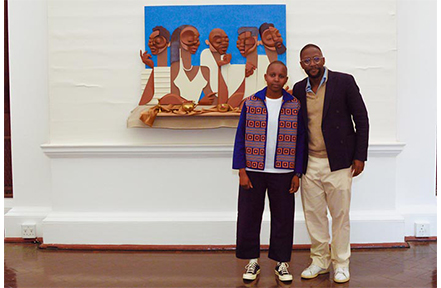Artist Dada Khanyisa’s exhibition opening breathes life back into Johannesburg Art Gallery
By Edward Tsumele, CITYLIFE ARTS Editor
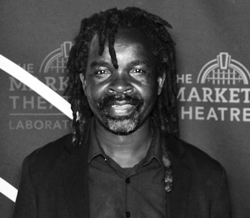
Outside the hooting of taxis and cars driving on King George Street (yes King George Street, thanks to the country’s colonial past) from or in the direction and of Noord Taxi Rank, one of the biggest in the city after the massive Bree Taxi Rank on the other side of town, can be clearly heard. Loud and clear from even inside the gallery.
Also outside, almost on the door steps of the gallery, hawkers selling anything from chicken feet, counterfeit clothes, tomatoes, bananas and beanies are doing a roaring business. People walking up and down on the pavements, some talking while others silent, but walking with self-determination and single mindedness in either direction, add to the energy of the area. These people are either going or coming from the nearby Noord Taxi Rank hemmed on the eastern side of the gallery.
These are busy bodies in colourful clothes and fashionably dressed – and there is something to be side about ordinary South Africans, no matter how poor they are, they try by all means to mask their poverty and therefore project a sense of dignity by dressing up smartly, especially when they venture into town. These bustling crowds are of course either heading to or coming from the nearby busy Park station. However there are also those crossing George Street, practically dodging being hit by impatient and sometimes rude taxi drivers who for some strange reason, expect pedestrians to give them the right of way, and not the other way round.
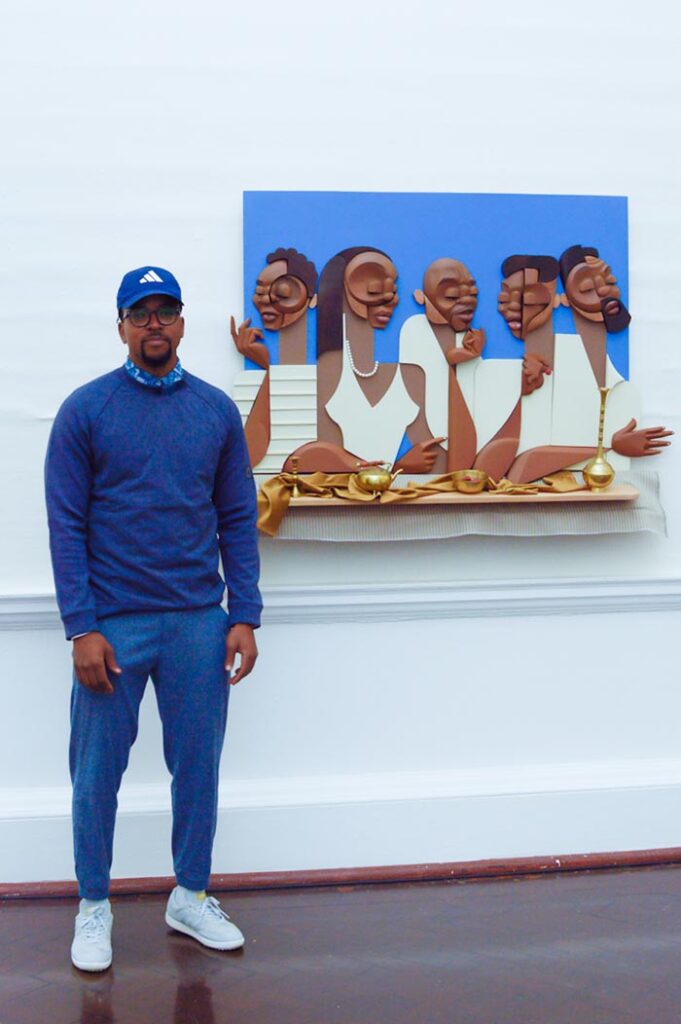
This segment of the crowd are heading to the nearby Park station, the biggest train station in Africa either to take a long distance train to far away cities such as Cape Town, Bloemfontein or nearby Pretoria, or simply going home in Soweto, the apartheid created settlement for black people where small four room houses all designed similarly known as match box houses, constitute the greater part of Soweto, with over 30 small townships in addition to other structures the desperate created around it. These are the so called informal settlements where people desperate for housing and out of their desire to be closer to Johannesburg, where the action is –opportunity for making a living as semi-skilled workers or simply as hawkers, beckons. Of course some go for less honourable activities in the city, but nevertheless, the motive is the same –hustling and making some money to keep body and soul together.
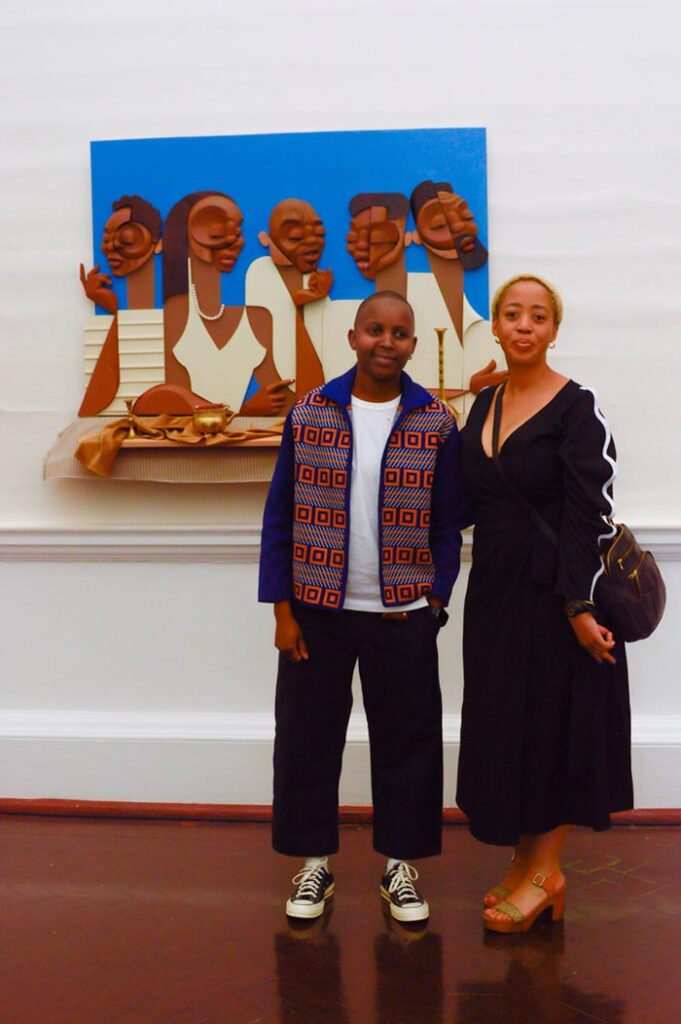
On the other side of the gallery, sitting between the high populated and high density flatland of Hillbrow, is Joubert Park, always busy with people. Some are lying around enjoying the sun that shines from time to time on a partly cloudy day and chilly Saturday afternoon. Others are playing chess on a improvised chess board drawn on the park’s grounds. This is one of the oldest chess boards in the city where strangers engage each other in this game of the mind. Here you will also find street photographers convincing passers-by to pose for instant pictures, ironically oblivious to the evolution of cell phone technology that allows any person to take a self- almost to perfection.
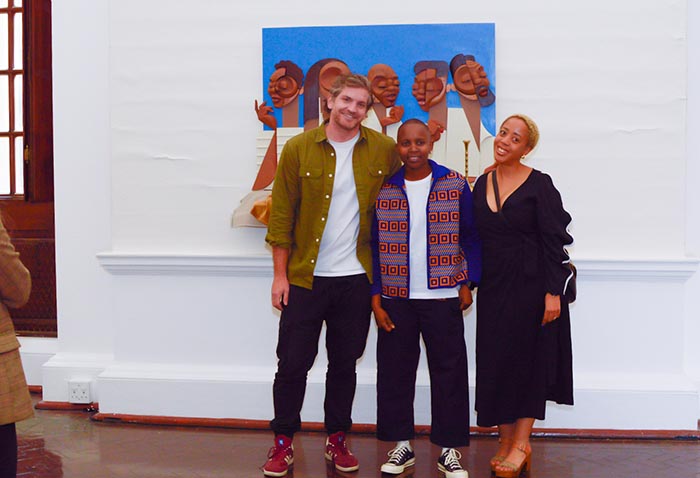
It is in this area where you will find the iconic Johannesburg Art Gallery with some of the most valuable art works owned by an institution in the country. The area where this gallery is situated could not have been better than this. Its potential to attract a huge crowd to benefit from its public programmes for a public gallery is huge with these transport arteries around it and a huge crowd milling around the place or travelling through the area. However the reality is not that way in a city that since 1994, has become a place many try to avoid. Yes Johannesburg in all reality, most of its parts that is, is a decaying city, with neglected building, dirty streets, crime and grime, leading some to refer to it as in a joking but fortunately ringing true, a museum.

The fact that a mysterious explosion ripped apart a big chunk of the busy Bree Street Taxi Rank a few weeks ago, is not helping matters in efforts to revive this giant city built on the backdrop of the discovery of gold in 1886, attracting all sorts of prospectors, speculators, crooks and massive migration in southern Africa with people coming into the reef looking for fortune and work. That legacy is there for everyone to see today –the different languages spoken in the streets of Johannesburg as well as its diverse culture and mosaic of cuisines from Nigerian fufu, Ethiopian Njera, to mogodu, which you can find being served almost on every street corner in the inner city.
However South Africa today is an ever changing country, with those with money having relocated, both themselves and their businesses to wealthier areas of the city, such as Rosebank, Fourways, Sandton and Waterfall, among other areas. This happened steadily since the dawn of democracy in 1994. This massive migration of the rich and their businesses has however had a negative effect on old Johannesburg. Neglect. Only the poor and the hustling lot have now taken their place and positions in the city. Successive municipal administration have battled and continue to battle to sel the story of old Johannesburg to a sceptical audience who see the future elsewhere and continue to regard old Johannesburg with curiosity, hesitancy and even fear.
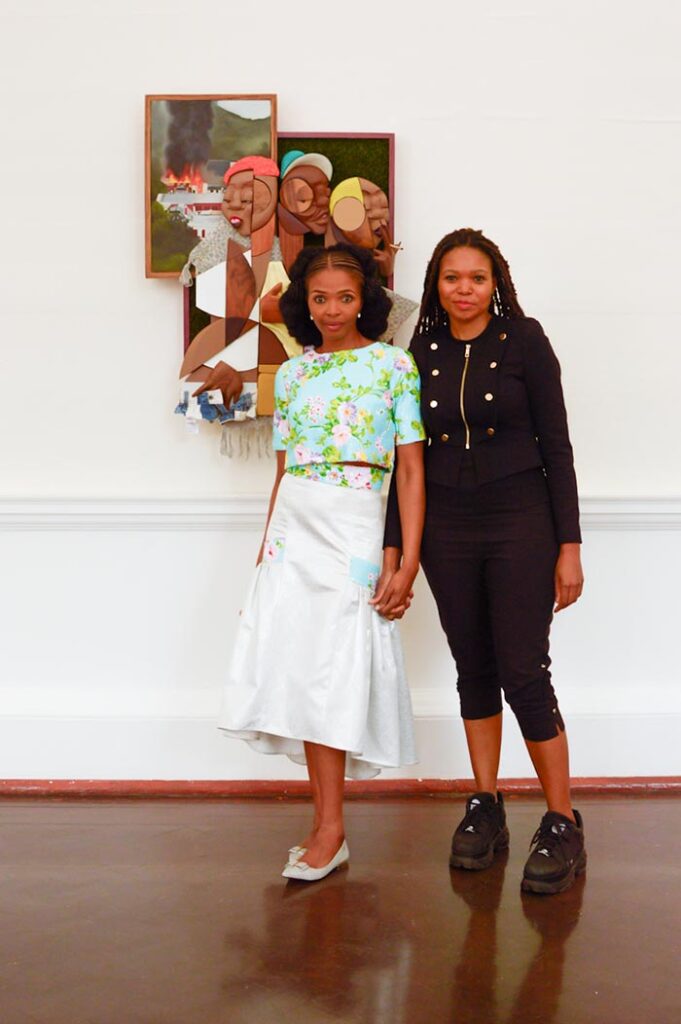
While the joke of old Johannesburg being a museum may ring true, there are however pockets of the city that remind us of the potential the city still wields even in this day and age of the massive migration to the north. Places such as Newtown, where the iconic Market Theatre is, and Maboneng in the East, which a few years ago underwent promising gentrification that drew the big guys with money and international tourists back to the city are classic examples.
It is this potential of old Johannesburg, and these certain pockets of hope. Planned properly they have the potential to get people back into the city and reclaim it. It is the cultural part of the city that carries that potential -theatre, visual arts, concerts and fashion parades for example.
This potential was demonstrated on Saturday, August 26, 2023, when visual artist Dada Khanyisa’s solo exhibition, ironically titled Cape Town, opened at the Johannesburg Art Gallery, where it will run for the next six months. The exhibition attracted a huge crowd, transforming the space into a lively space reminding one of once a time when the gallery used to host regular exhibitions and its public programmes were something to marvel at. But that was before budgetary cuts and the general loss of support from the corporate sector for this important art institution in the city set in.
But on Saturday, the opening of Khanyisa’s exhibition just demonstrated what is possible when heads are put together by leaders from different institutions that have a vested interest in the cultural revival of the city, if not plucking it completely from its current ‘museum’ status, at least making it a culturally vibrant museum, such as demonstrated by this exhibition. The opening of the Cape Town exhibition is in fact the activation of activities by the FNB Joburg Art. This will be followed by other activities in subsequent days associated with this country’s first art fair FNB Art Joburg, which this year is scheduled to take place at the Sandton Convention Centre from September 8 -10 2023, at the Sandton Convention Centre.
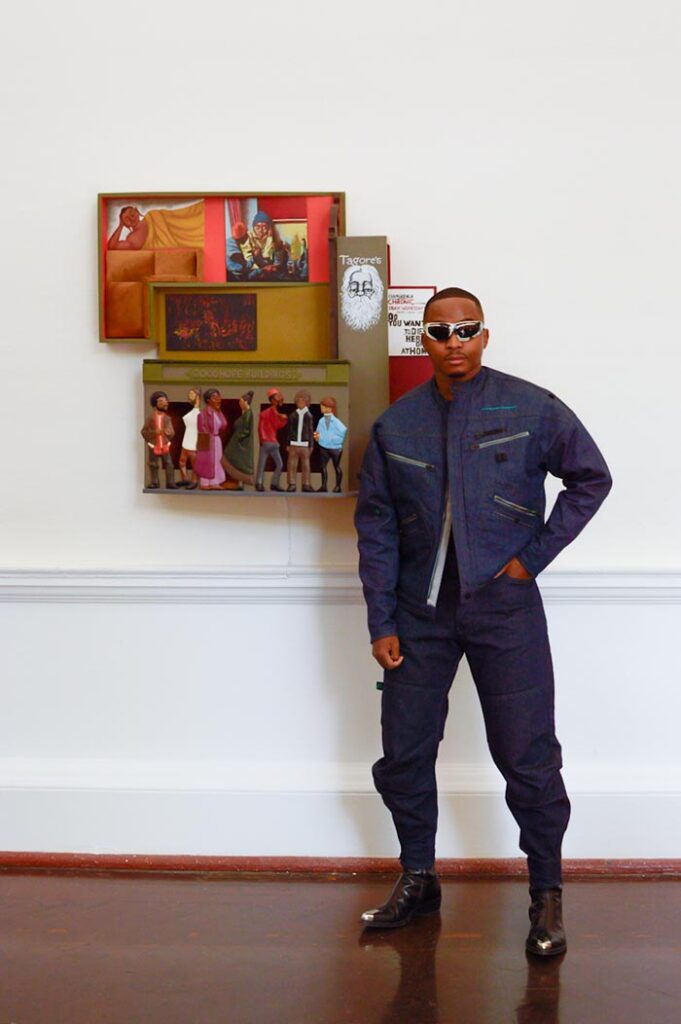
Included in these precursor activities is the inaugural FNB ART Joburg BMW Art Generation which will take place at the Centre for Less Good Idea in Maboneng, from September 1 to September 3, 2023 (see our separate article in this edition. These events are surely meant to revive old Johannesburg and make it once again a vibrant cultural space of choice for both tourists and locals.
Khanyisa’s Cape Town exhibition opening clearly demonstrated that, as well-known people ventured into the belly of the city most of whom certainly call Johannesburg’s northern suburbs and other surrounding richer suburbs home today. They converged in big numbers and reconnected with friends old friends. Among those who attended the event include musician Simphiwe Dana and TV presenter and model Maps Maponyane, who is also an ardent collector of art.
“Johannesburg is an important city that has produced thinkers and leaders in business, politics and those with ideas. It is important to reclaim the city and Dada Khanyisa’s exhibition taking place at this institution is part of that reclaiming of the city,” said Mandla Sibeko, the director of FNB Art Joburg.
Vuyisile Mshudulu, director Arts, Culture and Heritage of the City of Johannesburg, echoed Sibeko’s sentiments when he said at the opening: “The opening of this exhibition has so many contradictions. To start with here is a black person addressing you at the Johannesburg Art Gallery, a space where black people in the past, including artists whose works were being shown here, were not allowed in the building. In order for them to view their own exhibition, they had to wear overalls and disguise as cleaners. The other contradiction one notes is that here is an exhibition opening in Johannesburg whose title is Cape Town. However I have also just noted that Dada Khanyisa, who used to live in a flat across the road when she was a kid has a connection with the gallery. She used to come here even though now she is based in Cape Town, but her art practice is influenced by the art works she saw here.”
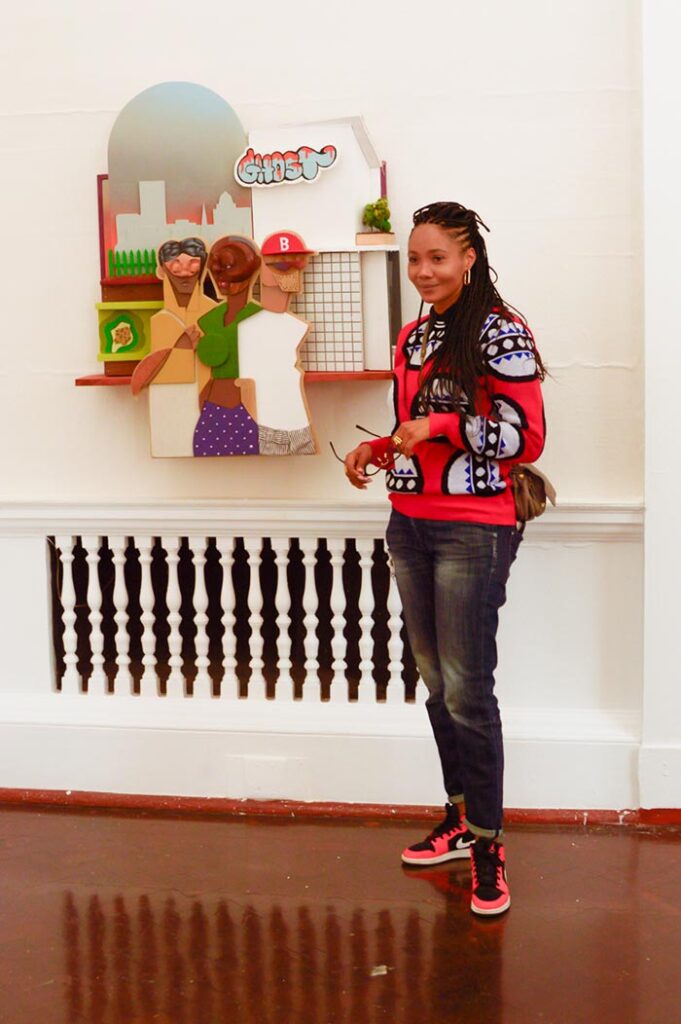
Speaking to CITYLIFE/ARTS on the side lines of the exhibition the artist indeed confirmed that she used to visit the gallery when she was seven, living with her aunt across the road in a flat overlooking the gallery as at that time she attended an inner city school.
Speaking about their exhibition, they had this to say: “For me having this exhibition here was a long and difficult conversation that my gallery and I had. Sometimes we were not sure whether that was the right decision, but eventually we concluded that indeed it was. For me having my solo museum exhibition here is the right thing because I am closely associated with the Johannesburg Art Gallery growing up in the city, before I relocated to Cape Town, where I have been for the past 10 years (They hold a fine art degree from Michaelis at the University of Cape Town, majoring in painting and sculpture). In a way this is me reporting back home what I have been doing in terms of my art education and practice while in Cape Town,” said the FNB Art Joburg Art Prize winner for 2022.










